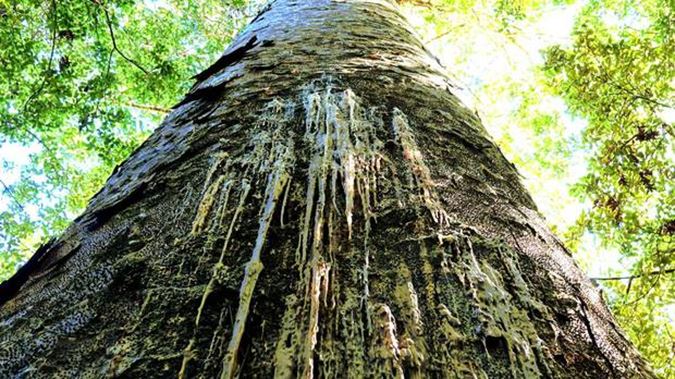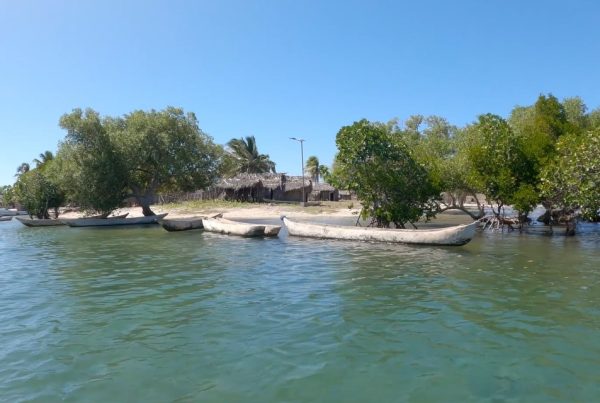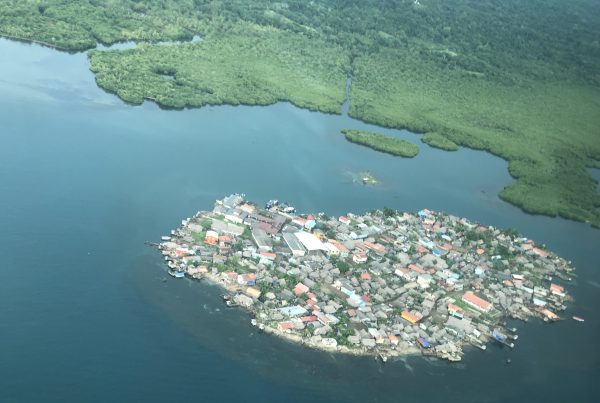Kauri dieback is a deadly, fungus-like disease specific to New Zealand which has killed thousands of kauri trees over the past ten years. Kauri dieback was formally identified in April 2008.
Kauri dieback is a deadly, fungus-like disease specific to New Zealand which has killed thousands of kauri trees over the past ten years. Kauri dieback was formally identified in April 2008. Its origin and time of arrival in New Zealand are still unknown, but evidence suggests that it was introduced from overseas. This assumption is based on the narrow genetic variation found in the disease population and on its preference for high soil temperatures, which suggests a more tropical origin.1 There is no known treatment as yet.
Kauri trees are considered a taonga species by many Māori: a species valued as a means of connection to the spiritual beliefs and way of life of their ancestors. A collective of representatives from Māori entities with kauri forests have formed the Tangata Whenua Roopu (TWR), part of a joint Kauri Dieback Programme that encompasses research on detection of kauri dieback, methods to control it and public awareness campaigns to help arrest its spread. The Programme has developed a culturally-based methodological framework for monitoring Kauri Ngahere (forest) health.
The framework uses a holistic kauri ecosystem approach (“ngahere“) which takes into account factors beyond the kauri alone. A key application of the methodology is the development of cultural health indicators, including both qualitative and measurable (quantitative) indicators that were repeatable and duplicable. The indicators were designed to determine the state of health of kauri forests in different areas; to anticipate or predict the presence of kauri dieback, and to identify resilient kauri trees or forests that were not susceptible to kauri dieback. The indicators were created using a mātauranga Māori approach2 within a complementary scientific framework.
Extensive interviews with experts in ngahere kauri (kauri forests) were held in order to develop a set of values, which guided the development of indicators and recommendations for the monitoring programme. A site record form and mobile data collection app template were also developed. In addition, a research project based on how Matauranga Māori rongoa (medicinal use of plants) may be useful for either individual kauri trees or kauri forest health was also developed. If successful it could provide knowledge and /or tools for use in future research and potentially in the fight against kauri dieback, either through use of a bio-control or by building the resilience and enhancing the health of kauri forests.
Image caption: Infected kauri tree
Author
- Based on Shortland (2011) and Roopu (2013)
Ecosystems
- Temperate forests
Topics
- Conservation and sustainable use
- Mapping and monitoring
- Knowledge, culture and spirituality
Type
- Short-form
Date
- This case study forms part of LBO-1, originally released in 2016.
References
- Kia Toitu He Kauri. Kauri Dieback. Origin and current locations. at <http://www.kauridieback.co.nz/kauri-dieback/origin-and-current-locations>
- ‘Mātauranga Māori can be defined as ‘the knowledge, comprehension, or understanding of everything visible and invisible existing in the universe’, and is often used synonymously with wisdom. In the contemporary world, the definition is usually extended to include present–day, historic, local, and traditional knowledge; systems of knowledge transfer and storage; and the goals, aspirations and issues from an indigenous perspective.’ / Landcare Research. Manaaki Whenua. What is Matauranga Māori? at <http://www.landcareresearch.co.nz/about/sustainability/voices/matauranga-maori/what-is-matauranga-maori>



